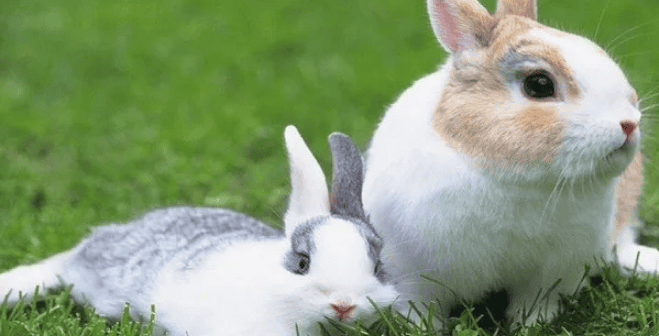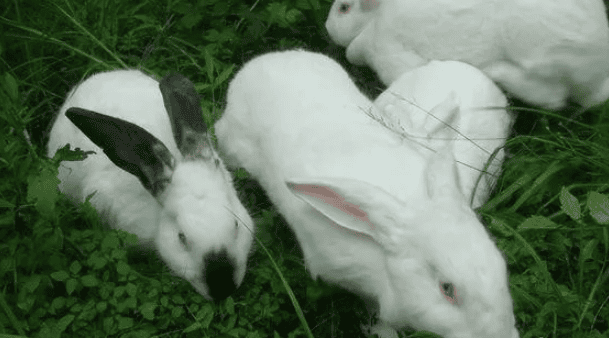Understanding the causes of illness in meat rabbits and actively taking measures to effectively prevent and control the occurrence of diseases can ensure good economic benefits and sustainable development of rabbit production. Rabbits, like other animals, can also develop diseases when they are affected by various adverse factors inside and outside the body. But domestic rabbits are small economic animals. Compared with other domestic animals, rabbits have many characteristics in anatomy, physiology, living habits and behavior. There are also big differences in feeding and management. Therefore, the importance of various pathogenic factors in the occurrence of rabbit diseases varies. The main causes of rabbit illness are now summarized into the following four situations:

1. Poor environmental conditions
Environment is the surrounding situation and conditions. The environment of a meat rabbit refers to the sum of various external factors around it, including various natural conditions and conditions provided by rabbit producers. External environmental factors are very complex. Whether they are natural factors or man-made factors, they can act and influence the rabbit body individually or comprehensively in various ways and through various channels, causing various diseases. reaction. The normal growth, development and reproduction of rabbits require certain external conditions. Some external environmental factors are beneficial to rabbits, and some are detrimental or even harmful to rabbits, such as polluted air, drinking water and venues, insufficient water sources, sudden climate changes, heat, humidity, cold, insufficient light, etc. When these unfavorable or harmful factors exceed a certain limit, rabbits will become sick or even die. Various external pathogenic factors exist in the surrounding environment where rabbits live. The more adverse or harmful factors there are in the rabbit's surrounding environment, the more disease-causing factors there are, the worse the environment, and the easier it is for rabbits to get sick. Therefore, to raise meat rabbits well, it is necessary to choose a place with better environmental conditions, and to improve and control the environmental conditions to meet the needs of meat rabbit production by building buildings suitable for meat rabbit production and carrying out scientific feeding and management.
2. Health and epidemic prevention work has not been implemented
Health and epidemic prevention work includes many contents and covers a wide range of areas, including sanitation, disinfection of premises, pest control and rodent control, disease inspection, Anti-vaccination injections, drug prevention, and treatment of sick rabbits also involve site selection and construction, introduction of breeding rabbits, and daily feeding and management.
Health and epidemic prevention work is of great significance for improving and controlling environmental factors in rabbit houses and preventing the occurrence and prevalence of infectious diseases and parasites. It also plays a certain role in controlling the occurrence of other diseases. Because through the careful implementation of various health and epidemic prevention work, not only can the premises be clean and the air fresh, but more importantly, various pathogenic microorganisms, parasite eggs and the vectors that transmit these pathogens in the surrounding environment can be eliminated or their harm can be reduced. At the same time, it can improve the body's immunity and enhance its ability to resist disease. Therefore, each rabbit farm must establish and improve various health and epidemic prevention systems and conscientiously implement them. Especially in modern large-scale and intensive rabbit farms, sufficient attention must be paid to this.

3. Improper feeding and management
Different animal species and breeds. The methods of feeding and management are different. Animals of the same species have different feeding and management requirements due to their different stages of growth and development, different physiological periods, and different seasons or climate conditions. The basic principles and requirements for rabbit feeding and management are based on the anatomical and physiological characteristics, living habits and behavior of rabbits, as well as feed and nutrition research data, combined with rabbit production practices, and have a certain scientific basis. As scientific research continues to deepen and the level of understanding continues to improve, various feeding and management measures will continue to be improved. If you do not understand science and do not believe in science, extensive feeding and management or wrong feeding and management will definitely cause damage to the growth, development and health of rabbits. For example, a single variety of feed, improper selection or unreasonable combination can easily lead to malnutrition or nutritional deficiencies in rabbits. Sudden changes in feed, uneven feeding, moldy, rotten or spoiled feed, improper preparation of feed, etc. can easily cause gastrointestinal diseases and poisoning diseases. Excessive stocking density, crowding, and poor ventilation in the house can also easily lead to a variety of diseases. In short, good feeding and management can eliminate many pathogenic external factors and have a benign influence on the internal causes of the disease, otherwise it is easy to make rabbits sick.
4. Caused by stress factors
Stress factors widely exist in the body's internal and external environments. Changes in various factors inside and outside the body may become stress factors. Cause a certain reaction in the body. During the normal life activities of rabbits, various factors inside and outside the body are constantly changing, but most of the changes are relatively minor. The body has adapted to these changes, and sometimes it may not be able to feel these changes, so it will not cause stress. reaction. Only factors that change relatively large, occur suddenly, and last for a relatively long time can cause a strong stress response in the body, such as sudden changes in climate, sudden change of feed, rough capture, long-distance transportation, setting off firecrackers, etc. Animals in a state of stress are panicked, and the body's immune system is suppressed and its resistance is reduced, which may lead to the occurrence of various diseases.

 扫一扫微信交流
扫一扫微信交流
发布评论